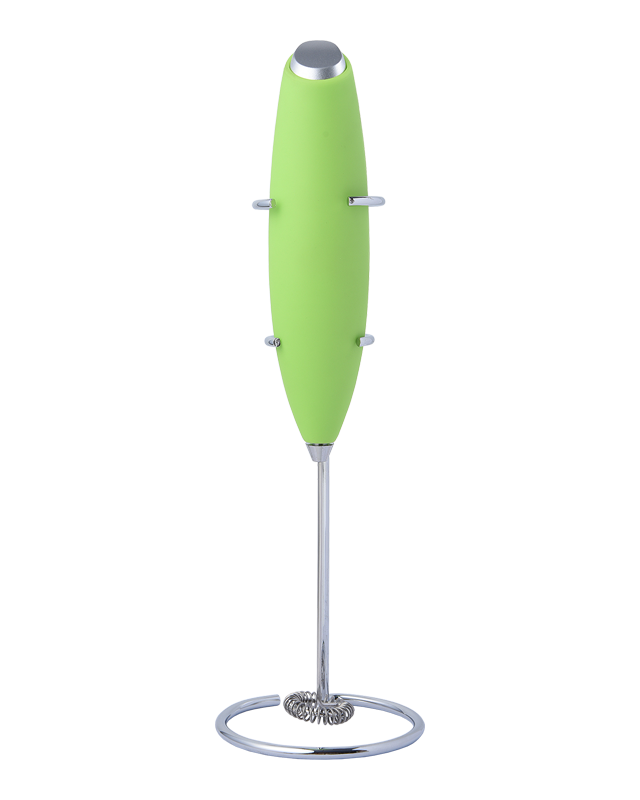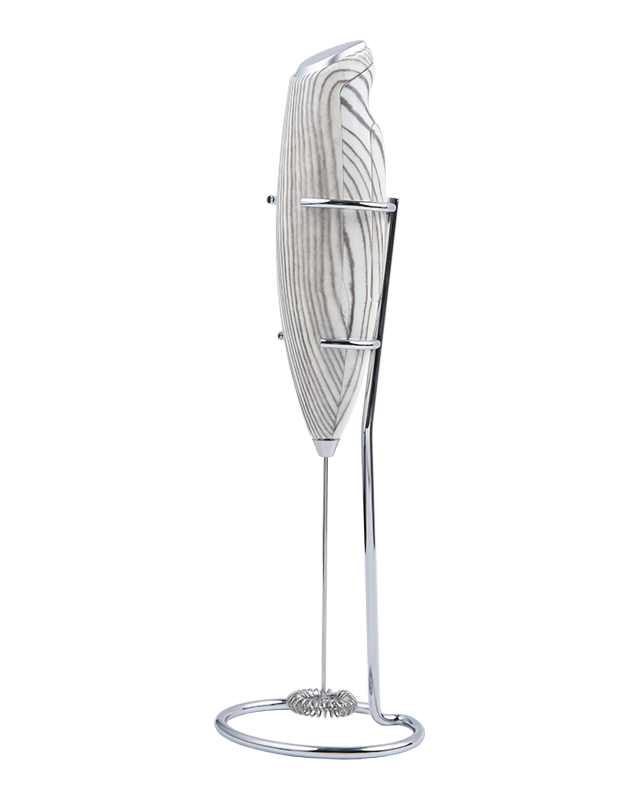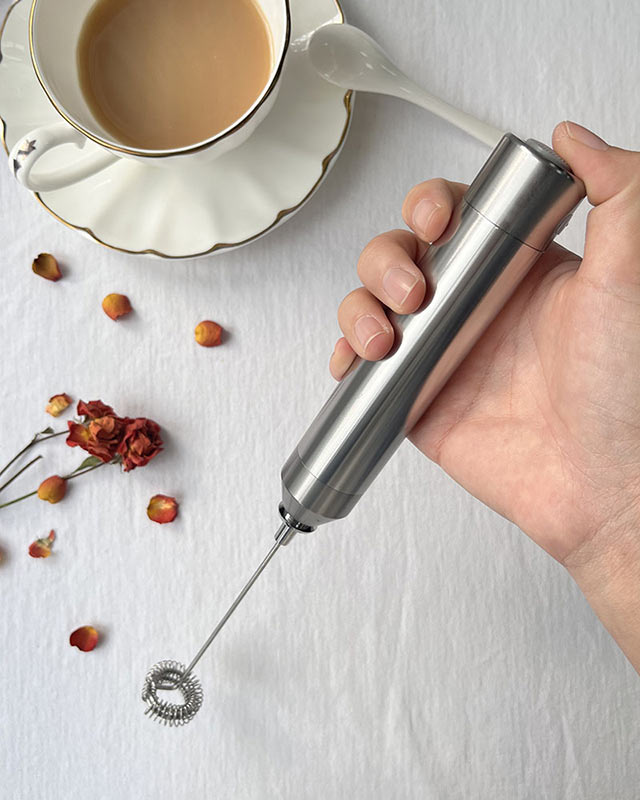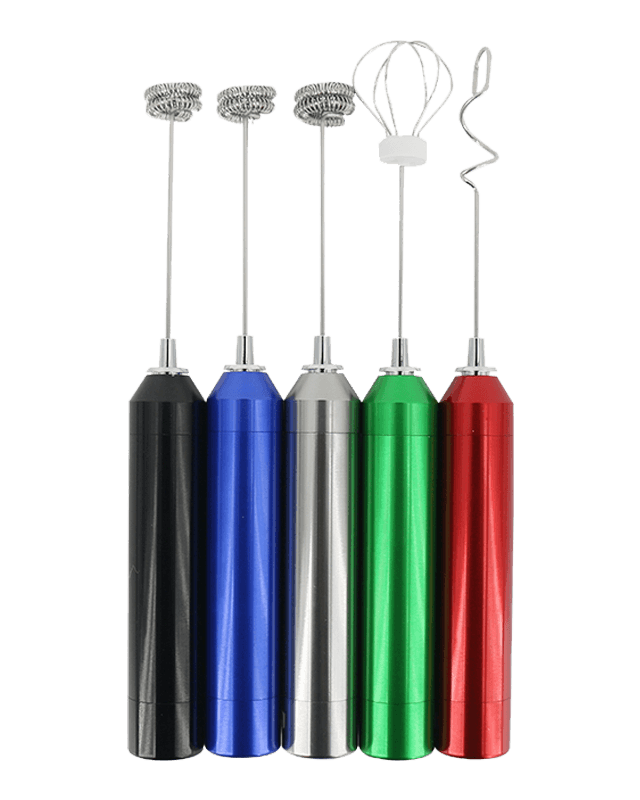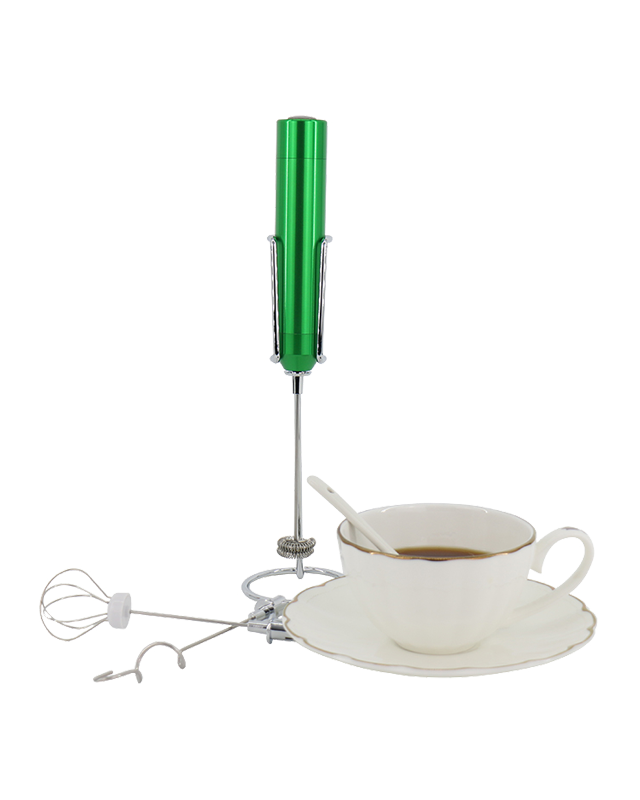Optimized Container Design for Foam Expansion
The container in the Mini Electric Automatic Milk Frother is meticulously engineered to handle the natural volumetric expansion of milk during frothing. Milk can expand up to two to three times its original volume depending on its fat content, protein levels, and temperature. The internal shape is often slightly tapered or cylindrical, providing a gradual upward path for foam, preventing abrupt rise that could cause spillage. The container walls are made of smooth, non-stick materials such as high-grade stainless steel or heat-resistant polymers, reducing friction and preventing foam adhesion, which could destabilize the froth. Many frothers include precision fill lines and volumetric indicators, guiding users to maintain milk below the maximum safe threshold, ensuring consistent headspace for expansion and avoiding overflow during high-speed frothing.
Whisk and Rotor Geometry for Controlled Aeration
The whisk or rotor is designed with specialized blade angles, spacing, and helical or spiral patterns to ensure controlled air incorporation. The geometry dictates how air bubbles are trapped and dispersed, producing dense, uniform microfoam rather than large, unstable bubbles that can cause splashing. The rotor’s central positioning minimizes turbulence at the edges of the container, maintaining milk and foam in a stable, upward-directed flow. High-quality materials, such as stainless steel or durable food-grade polymers, reduce friction, prevent corrosion, and maintain smooth rotation even during extended high-speed operation.
Motor Speed Control and Gradual Acceleration
High-speed frothing can generate turbulence, splashing, and overflow if not properly controlled. The Mini Electric Automatic Milk Frother often uses gradual acceleration protocols, starting the rotor at low RPM and ramping up progressively. This reduces cavitation and violent turbulence within the milk, ensuring that foam rises smoothly. Advanced models employ adaptive motor control, adjusting rotational speed based on milk volume, temperature, or foam density detected via sensors. This dynamic regulation maintains steady, predictable froth formation, preventing sudden expansion or overflow even with high-fat or plant-based milk alternatives.
Lid Design and Integrated Splash Guards
The critical feature is the frother’s lid, which contains foam and milk while allowing steam and air pressure to escape. Lids often include venting holes that release excess pressure without letting foam escape. Some designs feature internal splash guards or concentric ridges that redirect upward-rising foam back toward the liquid surface, maintaining containment. Transparent or semi-transparent lids allow real-time monitoring of froth development, so users can observe expansion without removing the lid, reducing the risk of accidental spillage or foam collapse.
Foam Stabilization via Thermal and Aeration Control
Stable foam is less likely to overflow. Frothers incorporate controlled heating to slightly warm the milk, which unfolds proteins such as casein and whey, creating a matrix that traps air effectively. Coupled with optimized aeration patterns, this produces dense, cohesive microfoam that rises steadily rather than suddenly. Temperature control ensures that the milk does not curdle or over-expand, preventing foam collapse or overflow. Foam stabilization also helps maintain texture and volume after preparation, improving user experience and reducing the need for intervention.
Real-Time Feedback and Sensor Integration
High-end frothers integrate sensors that monitor milk level, foam density, and container pressure. These sensors provide feedback to the motor and heating elements, enabling the device to adjust speed, stop, or modulate power automatically when critical thresholds are reached. For example, if the foam approaches the top of the container, the device may slow the whisk or temporarily pause heating to prevent spillage. This real-time control allows consistent froth quality across different milk types and volumes, minimizing user error and maintaining safety.
Base Stability and Anti-Vibration Engineering
The frother’s base is engineered to remain stable during high-speed operation. Non-slip rubber pads, suction elements, or a weighted base prevent tipping, sliding, or vibrations that could destabilize the froth. Stability is critical because any movement of the container during frothing can create localized turbulence, causing splashing or uneven foam distribution. Ergonomically designed bases ensure that the device remains secure on countertops, tables, or other surfaces, allowing the frother to operate predictably and safely.



 English
English
 Français
Français
 Español
Español
 Deutsch
Deutsch
 日本語
日本語









